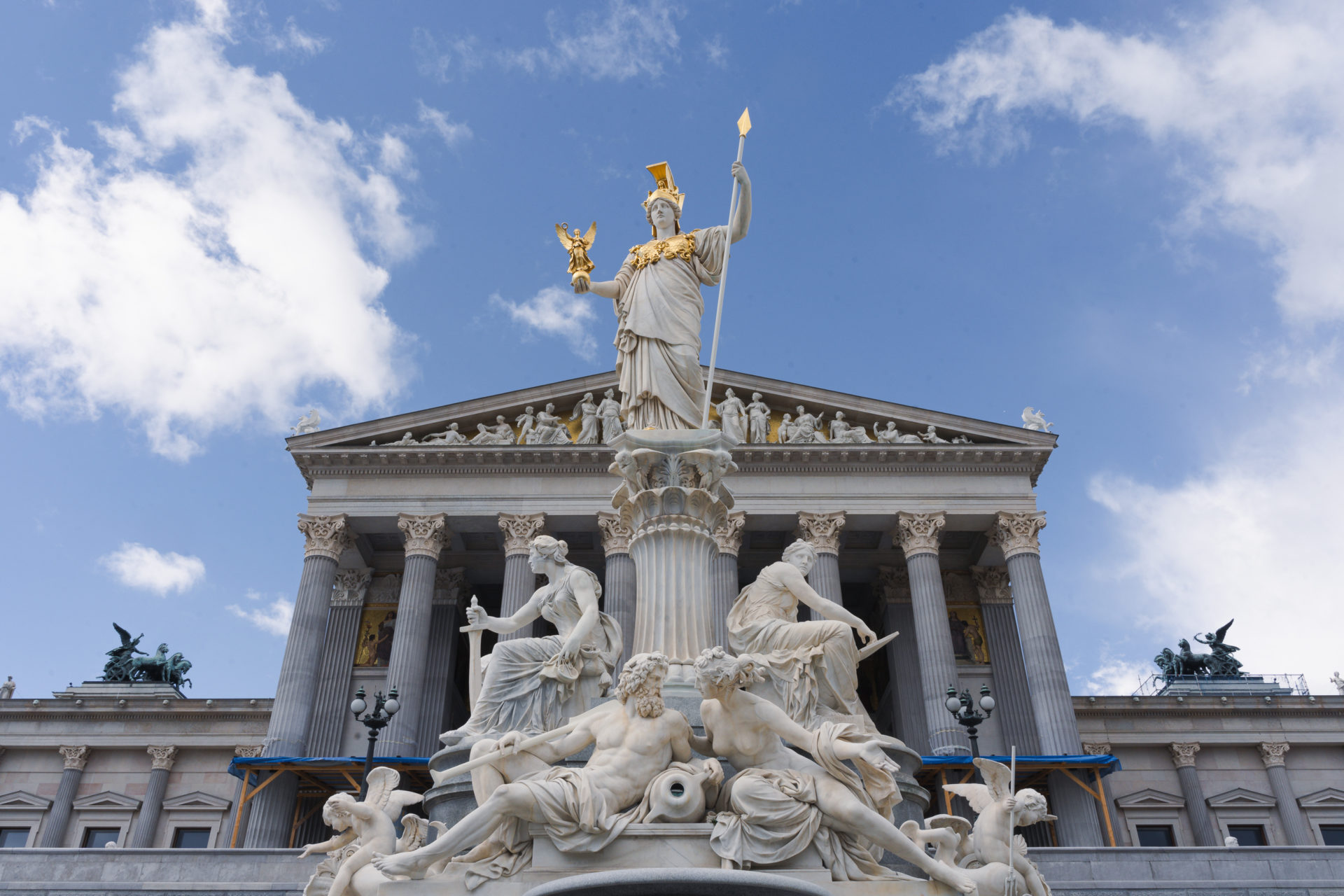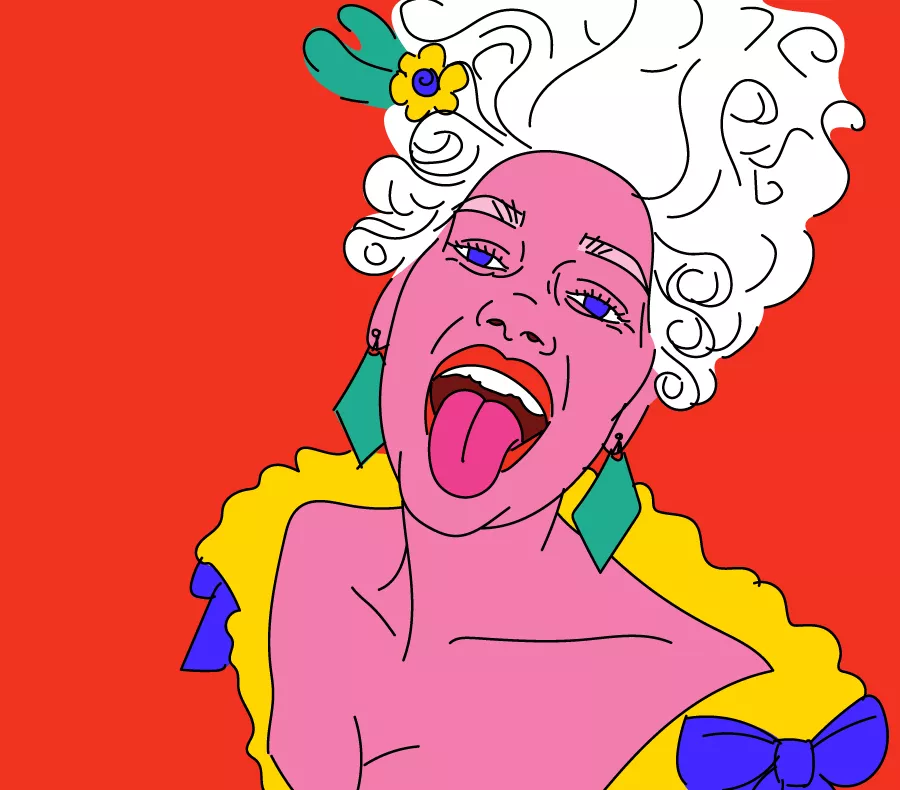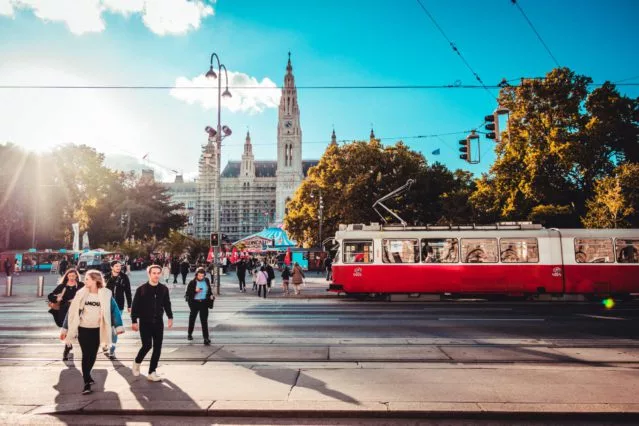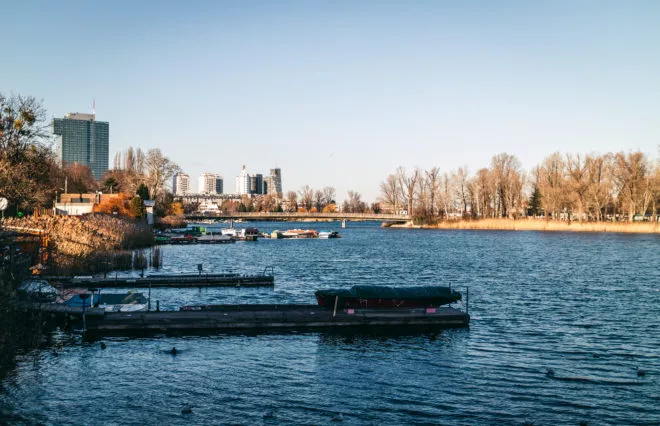Did you ever wonder why Franz Josef is parading around the Parliament in his nightgown? Or why there are men trying to tame horses in front of the building? Well, we were curious. So we went there. And got super intriguing facts about this glorious building called ‘the Parliament’.
1. The are figures representing important rivers
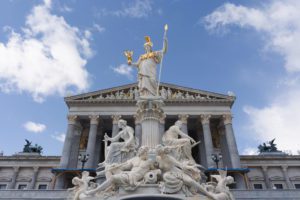
The 4 seated figures at the fountain of the Pallas Athena represent the 4 main rivers of the monarchy (that would be the Danube, Inn, Elbe and Moldau rivers in case you didn’t know).
2. The figure of the Emperor (aka Franz Josef) is wearing a nightgown
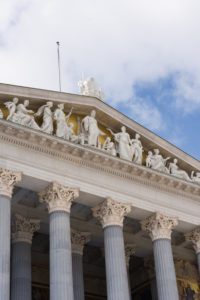
At the main gable in the middle of the roof, there is a stylized figure of Emperor Franz Josef. People call it “The Emperor in his Nightgown” because instead of wearing his usual very proper clothes, he is wearing a toga. The design of the monarch as Roman imperator indicates the emperor’s self-image as an absolutist regent who directs the fortunes of the Austro-Hungarian monarchy.
3. Have a look at the human rights declaration
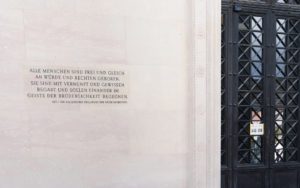
When entering the Parliament through the main portico, you will see article 1 of the human rights declaration. Good stuff!
4. At the beginning of the ramp are four ‘Rossebändiger’ who are here to remind you to keep your political passion in check
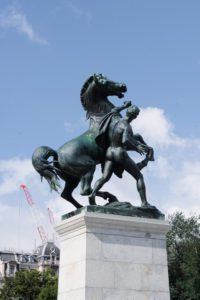
The horse tamers (aka ‘Rossebändiger’) are bronze statues that stand on four pedestals. They are regarded as a symbol for the taming of passion and thus represent an appeal to the members of parliament to keep their political passion in check.
5. Walking up the ramp you’ll meet people like Polybius, Xenophon and Julius Caesar (in the shape of figures, of course)
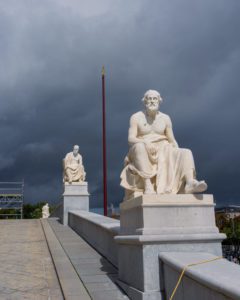
The access ramp to the parliament building is adorned with eight seated statues of ancient historians carved from Lasa marble. These historians are intended to symbolically remind Abgeordnete before they enter the Parliament building that their work in Parliament must stand up to the judgment of history and future generations. No pressure!
6. The female figures symbolize the high moral standards of state power
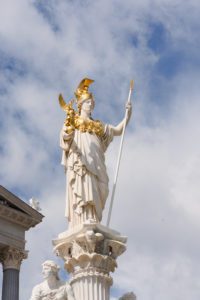
At the time the parliament was being built, female figures were often used to represent state forces, such as Pallas Athena or Austria. As symbols of beauty, truth and goodness, female allegories embodied the high moral standards of state power emanating from the people.
At that time, however, it was not possible for women to participate in political life. Why were women chosen to represent the political powers in the 19th century, when men dominated the legislative and executive powers? At that time, the female body was ascribed the meaning of an “imaginary general”. The pair of female figures here personifies the abstract principle of the separation of powers and is intended to express the “nature” of legislative and executive power.
7. The Parliament is the world’s first multinational legislative body – but negotiations were conducted exclusively in German
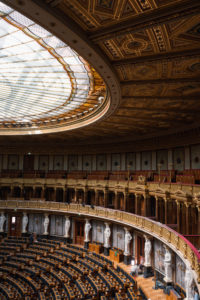
Eight nations, eleven different mother tongues, 17 crown lands, more than 30 parties and groups, and 516 members make up the House of Representatives of the Austrian Reichsrat. It was the world’s first multinational parliament. However (fun fact!) the negotiations were conducted exclusively in German.
8. The 24 Corinthian marble columns weigh around 16 tons (damn!)
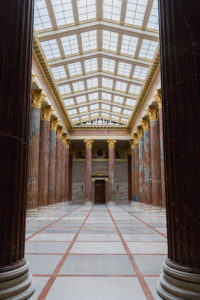
Following Theophil Hansen’s building idea, the elongated central room of the parliament building was intended (at the time of its construction) to be a meeting place between the MPs and the members of the manor house. Today, the columned hall serves as a venue for receptions and exhibitions. Politicians like to choose it as a place for interviews. The 24 Corinthian marble columns that support the ceiling and glass roof are monoliths, meaning they are carved from a single block of marble. They weigh around 16 tons. The room dimensions of 40 x 24 meters correspond to about half a soccer field.
9. The reason why the Parliament is built in the classic Greek style is because of Ancient Greece’s values
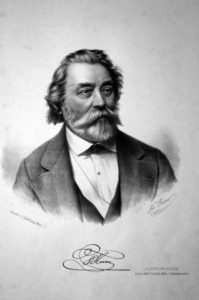
Theophil Hansen designed the parliament in 1869. The architect explained that he chose the Greek classic style for the parliament building because the Hellenes were the first people who loved freedom and law above all else. In addition, important constitutional terms such as “politics” or “democracy” originate from Ancient Greece.
10. The site is huuuuge – like proper three soccer fields-huge
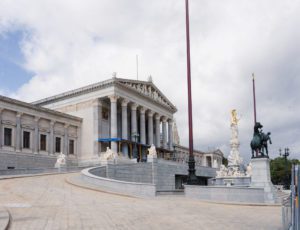
The site area is 20,142 square meters, which roughly corresponds to the area of three soccer fields. The floor area of the building is 13,687 square meters.
11. Pretty cool: They repair things in-house
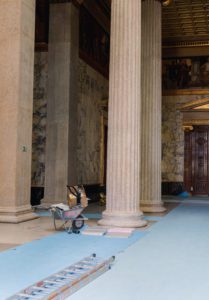
If something breaks in the parliament building, it is repaired in-house. They have an electrical workshop, a metalworking shop, a carpentry shop and a wallpapering shop on site.

